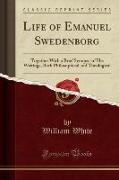Read more
Excerpt from Life of Emanuel Swedenborg: Together With a Brief Synopsis of His Writings, Both Philosophical and Theological
Of its thought. Has, I believe, no equal in the English language. The comparative silence of our literary critics, in reference to this work, proves that any one who cares to appreciate what is best in the world, had better not be content to trust solely to their eyes. From the quotations I have made in the course of the following narrative, the reader will be able to appreciate a few of the good things contained in this Biography by Wilkin son. In 1854, Edwin Paxton Hood published Swedenborg A Biography and an Exposition, a work which has been the means of introducing Swedenborg to a large circle hitherto almost ignorant of his existence. In the same year, Woodbury M. Fernald published, in Boston, Mass, A Compendium of the Theological and Spiritual Writings of Swedenborg, to which an excellent life of the Author was prefixed, compiled in great part from previous biographies. In other forms, many sketches of the life of Swedenborg have been published. The Rev. 0. P. Hiller gives an excellent little biography in his vol ume of Gems from Swedenborg. Emerson tells the story of his life, in his own way, in Representative Men; and a Lecture by George Dawson, on Swedenborg, is now circulating, as a tract, by thousands throughout the land. All these things evidence a growing interest in the greatest teacher of modern times.
About the Publisher
Forgotten Books publishes hundreds of thousands of rare and classic books. Find more at www.forgottenbooks.com
This book is a reproduction of an important historical work. Forgotten Books uses state-of-the-art technology to digitally reconstruct the work, preserving the original format whilst repairing imperfections present in the aged copy. In rare cases, an imperfection in the original, such as a blemish or missing page, may be replicated in our edition. We do, however, repair the vast majority of imperfections successfully; any imperfections that remain are intentionally left to preserve the state of such historical works.

